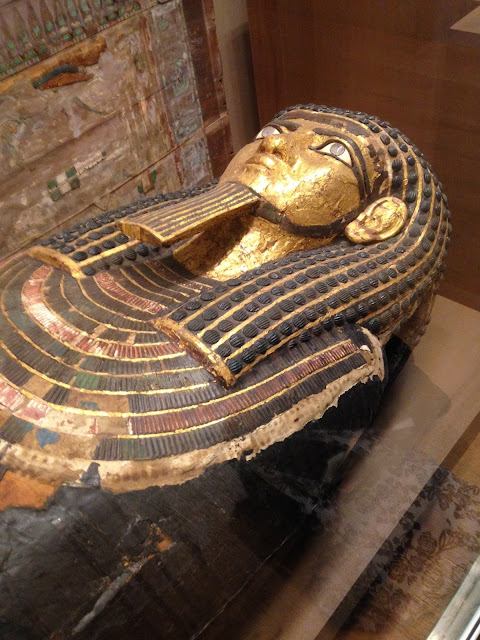Day 400 - The classical landscape
February 10, 2025
400 days and, yes, counting. The museum map indicates that I have 21 galleries to go. I'd hoped to make my final visit by my birthday, March 9, but this doesn't seem feasible. How short-sighted my idea of 365 visits in a year was - but how much purpose this project has injected into my life! I wonder what its next chapter will be.
The theme of Gallery 623 is "The Classical Landscape." The introductory sign notes that 17th century artists from all over Europe went to Rome to study and to paint classical monuments and the Roman countryside. (The latter, I learn, was known as the Campagna, which seems odd to me because nowadays, Campania is the region of which Naples is the capital.) A look back at the entries for Days 305 and 306 reminds me that Rome's dominance of the artistic scene persisted into the 19th century.
The gallery holds a remarkable collection of paintings by Nicolas Poussin and Claude Lorrain. I don't much like the formality of the Poussin works, but it's interesting to read the wall sign describing his "Saints Peter and John Healing the Lame Man" (the first work, above) and to realize how much Poussin was influenced not just by classical antiquity but by the works of the great Renaissance masters. The pyramidal arrangement of the painting's figures, says the sign, echoes Raphael's compositions (I instantly think of the Stanze in the Vatican Museum), and the outstretched arms that link Saint Peter and the lame man call to mind the image of God and Adam on the ceiling of the Sistine Chapel.
I do like Claude Lorrain's serene landscape of the Campagna, painted around 1639 and measuring about 54 inches wide and 40 inches high Cattle grazing peacefully occupy the shadowed foreground, in the middle ground is a stone building with a crenellated tower and a river that winds into the distance, and in the far distance are rounded hills set against a light blue sky. This combination of darkened foreground and radiant background is, I learn, characteristic of Lorrain. The palette of greens, blues, and earth tones is soothing and restful; the painting would be welcome decor in a bedroom or a hospital waiting room. In fact, the wall sign notes that Lorrain and other artists envisioned this countryside as a kind of Arcadia, replete with shepherds and musicians. (If the sign hadn't pointed me to it, I wouldn't have noticed the musician strumming his instrument in the middle ground. )
My compliments to the person who wrote the wall signs for this room. I've learned a lot.
But all this is a diversion from the work I knew I wanted to write about the moment I entered the gallery, a marble statue of Dionysus seated on a panther, because it struck me as so weird. That weirdness, I discover, comes from the fact that the statue, which measures roughly 54 inches long and 54 inches high, is an amalgam of two distinct parts. Dionysus was sculpted by Francois Duquesnoy, of whom I'd never heard before but learn was a major artist in 17th century Rome. The panther dates from the 1st - 3rd century C.E. - no wonder it looks so weathered, its details eroded. (In contrast, every grape in the bundle Dionysus holds in his left hand is clearly modeled.) The scale of the two parts is also completely off: Dionysus looks almost life-size, while the panther is shrunken. I wonder why the curator chose to place the work in this gallery, since it has nothing to do with landscape. But it does show the reverence that so many artists held for classical antiquity.






Comments
Post a Comment